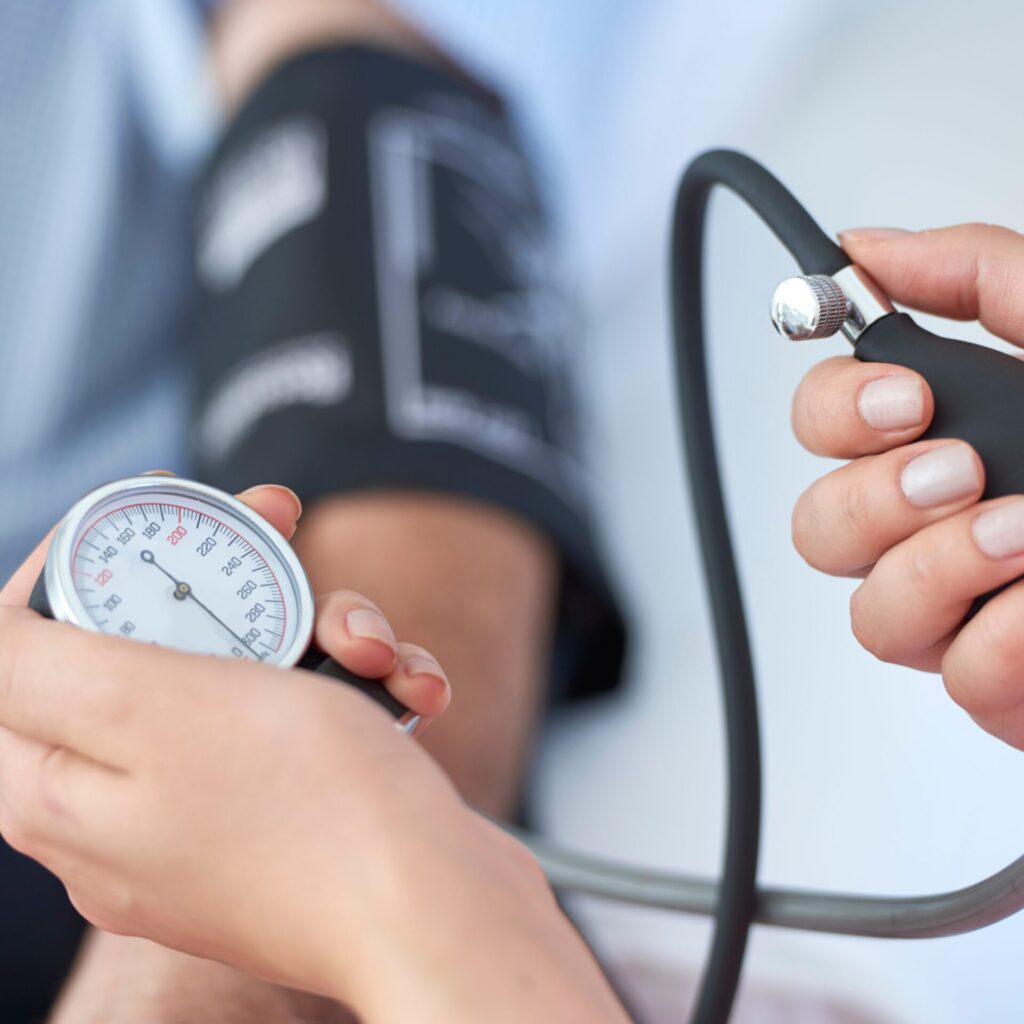What is blood pressure?
Blood pressure is the force of your blood pushing against your arteries as it travels around the body. There are two types of measurements for blood pressure:
- Systolic pressure
- Diastolic pressure
Systolic pressure
The higher number represents the pressure when your heart beats.
Diastolic pressure
The lower number represents the pressure when your heart is at rest between beats.
What is a normal blood pressure by age?
A normal blood pressure for any age is anything up to 120/80.
For 18-39 –year old females, the normal blood pressure measurement is 110/68 and for males of the same age, 119/70.
For 40–59 –year old females, the normal blood pressure measurement is 122/74 and for males of the same age, 124/77.
For females aged 60 and over it’s 139/68, and for males aged 60 and over, it’s 133/69.
Blood pressure chart


What causes high blood pressure?
High blood pressure can be caused by several factors, such as:
- Lifestyle choices
- Underlying medical conditions
- Genetics
High blood pressure from lifestyle choices
Unhealthy diet
An unhealthy diet can cause high blood pressure, especially if you have a high salt intake and your diet lacks necessary nutrients from fruit and vegetables. Keeping a healthy balanced diet and avoiding excessive alcohol consumption can reduce the chances of high blood pressure.
Lack of exercise
A lack of exercise can lead to weight gain and health issues that could lead to high blood pressure. It’s recommended that an adult gets 150 minutes of exercise per week to keep a healthy balanced lifestyle.
Smoking and vaping
Smoking and vaping raises blood pressure both short term (immediately) and long term.
Stress levels
Chronic stress can temporarily raise blood pressure levels, and over time can contribute to hypertension
High blood pressure from underlying medical conditions
Certain underlying medical conditions like diabetes and kidney disease can cause high blood pressure.
Diabetes
High blood pressure and diabetes are connected health issues. Diabetes increases the risk of high blood pressure, and high blood pressure increases the risk of type 2 diabetes. The connection between the 2 conditions can lead to serious complications including heart disease and stroke.
Kidney disease
Kidney disease causes high blood pressure as it affects the body’s ability to regulate blood pressure. Like diabetes, kidney disease and blood pressure have a correlating relationship, meaning one can affect the other. Kidney disease causes damage that in the long term disrupts the body’s natural ability to regulate blood pressure.
How to reduce your blood pressure
Lowering your blood pressure takes a combination of lifestyle changes, and sometimes medication if necessary. Lifestyle changes that help to lower blood pressure include:
- Regular exercise
- A healthy diet
- Cut down on alcohol
- No smoking or vaping
- Maintaining a healthy weight
How does exercise lower blood pressure?
When you exercise you strengthen your heart which improves blood vessel functions. Overtime, this reduces the stress on your circulatory system. The more you exercise the stronger your heart becomes, which allows it to pump blood around your body more efficiently. The role of exercise in weight management is crucial. Extra weight can put added strain on your heart, and maintaining a healthy weight can help to reduce the pressure on your heart.








